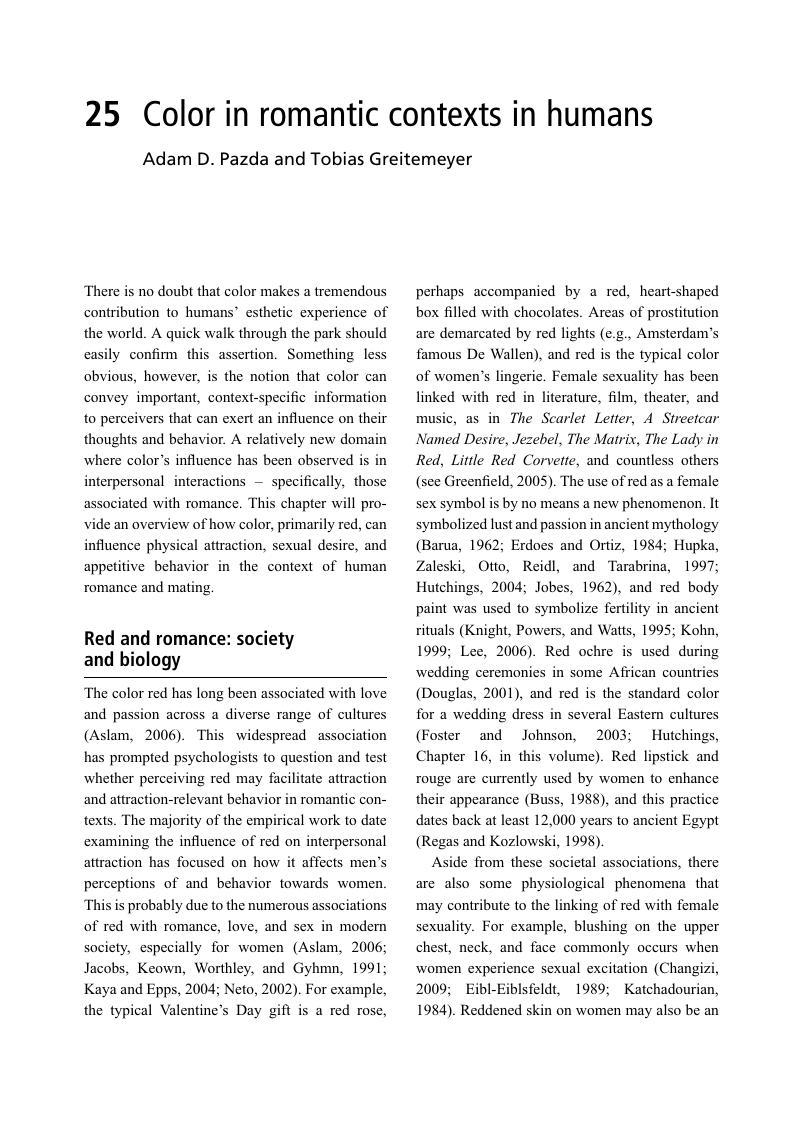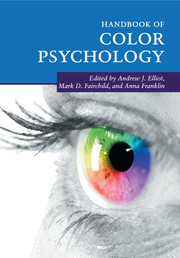Book contents
- Handbook of Color Psychology
- Handbook of Color Psychology
- Copyright page
- Contents
- Figures
- Tables
- Contributors
- Foreword
- Part I Introduction
- Part II Foundations: basics of color science
- Part III Development of and differences in color vision
- Part IV Color categorization
- Part V Color symbolism and association
- Part VI Color preferences
- Part VII Color effects on psychological and biological functioning
- 23 The role of color in the voluntary and involuntary guidance of selective attention
- 24 Color and mate choice in non-human animals
- 25 Color in romantic contexts in humans
- 26 Color in competition contexts in non-human animals
- 27 Color in achievement contexts in humans
- 28 Color and face perception
- 29 Eating with our eyes: on the color of flavor
- 30 Non-visual effects of colored light
- Part VIII Psychological effects on color perception
- Part IX Color phenomena
- Index
- References
25 - Color in romantic contexts in humans
from Part VII - Color effects on psychological and biological functioning
Published online by Cambridge University Press: 05 April 2016
- Handbook of Color Psychology
- Handbook of Color Psychology
- Copyright page
- Contents
- Figures
- Tables
- Contributors
- Foreword
- Part I Introduction
- Part II Foundations: basics of color science
- Part III Development of and differences in color vision
- Part IV Color categorization
- Part V Color symbolism and association
- Part VI Color preferences
- Part VII Color effects on psychological and biological functioning
- 23 The role of color in the voluntary and involuntary guidance of selective attention
- 24 Color and mate choice in non-human animals
- 25 Color in romantic contexts in humans
- 26 Color in competition contexts in non-human animals
- 27 Color in achievement contexts in humans
- 28 Color and face perception
- 29 Eating with our eyes: on the color of flavor
- 30 Non-visual effects of colored light
- Part VIII Psychological effects on color perception
- Part IX Color phenomena
- Index
- References
Summary

Information
- Type
- Chapter
- Information
- Handbook of Color Psychology , pp. 531 - 545Publisher: Cambridge University PressPrint publication year: 2015
References
Accessibility standard: Unknown
Why this information is here
This section outlines the accessibility features of this content - including support for screen readers, full keyboard navigation and high-contrast display options. This may not be relevant for you.Accessibility Information
- 9
- Cited by
